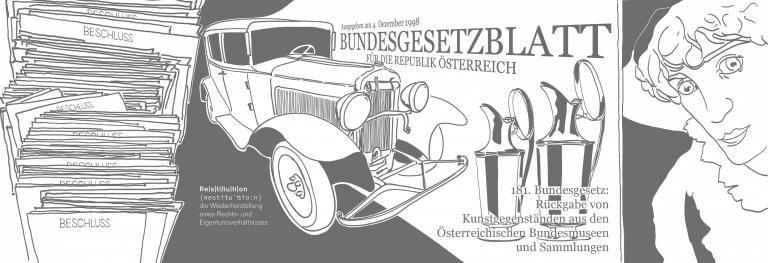Bundesgesetze 1946–1995
Bundesgesetze 1946–1995
Bereits vor 1998 gab es in Österreich, in unterschiedlichen Phasen und Kontexten, gesetzliche Regelungen, die die Restitution von Kunst- und Kulturgütern betrafen. Ausführliche Informationen zur Entstehung und zum Kontext der österreichischen Rückgabegesetzgebung finden sich in den Bänden der Historikerkommission.
Finden Sie im Folgenden eine Auswahl der wichtigsten Regelungen seit 1946. Von besonderer Relevanz bis heute ist dabei das Bundesgesetz zur Nichtigerklärung von Rechtsgeschäften und sonstigen Rechtshandlungen, die während der deutschen Besetzung Österreichs erfolgt sind (BGBl. 106/1946, sog. Nichtigkeitsgesetz) als Grundlage für das Kunstrückgabegesetz 1998.
Nichtigkeitsgesetz 1946
Erstes Rückstellungsgesetz 1946
Zweites Rückstellungsgesetz 1947
Drittes Rückstellungsgesetz 1947
Viertes Rückstellungsgesetz 1947
Fünftes Rückstellungsgesetz 1949
Sechstes Rückstellungsgesetz 1949
Siebentes Rückstellungsgesetz 1949
Kunst- und Kulturbereinigungsgesetz 1969
2. Kunst- und Kulturbereinigungsgesetz 1986
“Mauerbachgesetz” 1995

